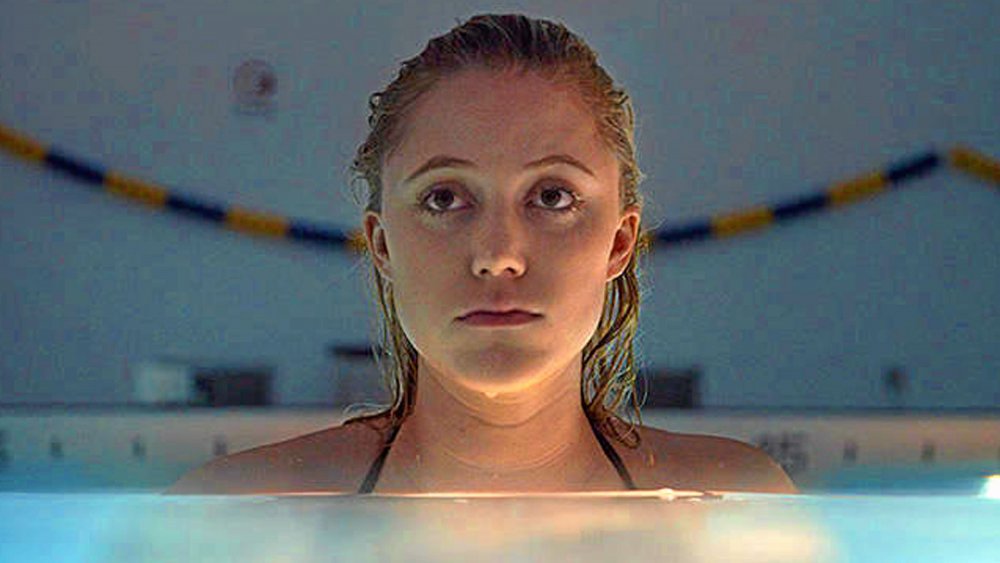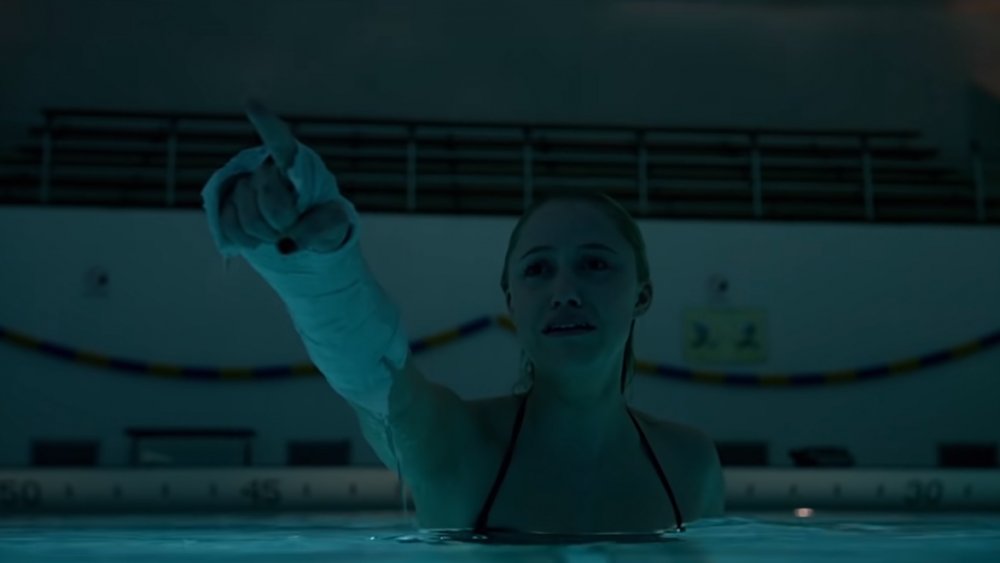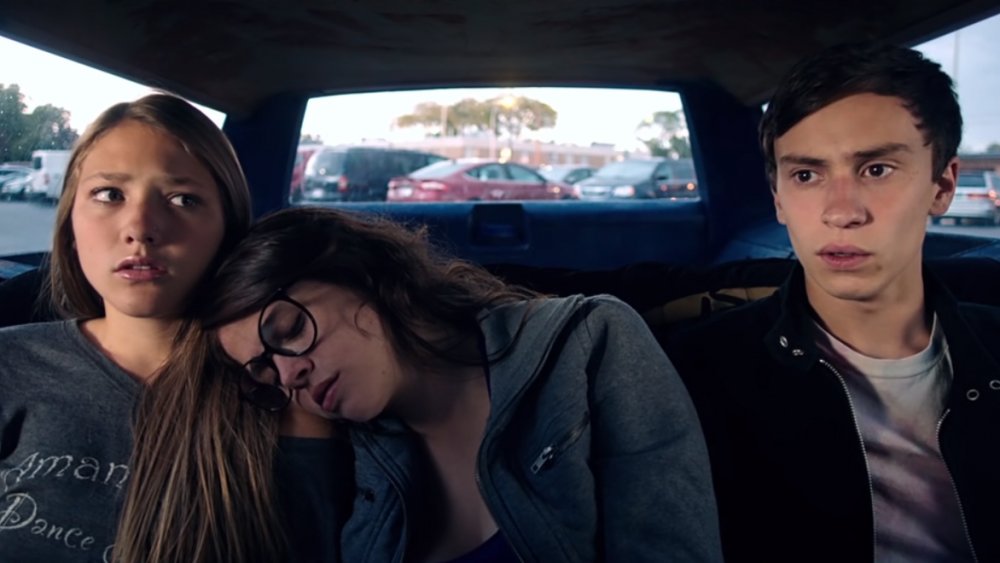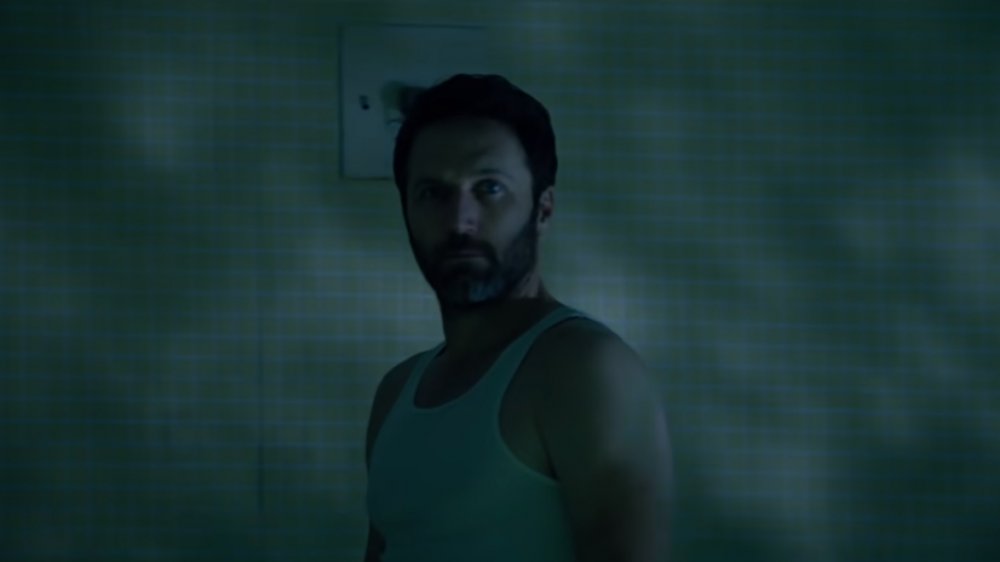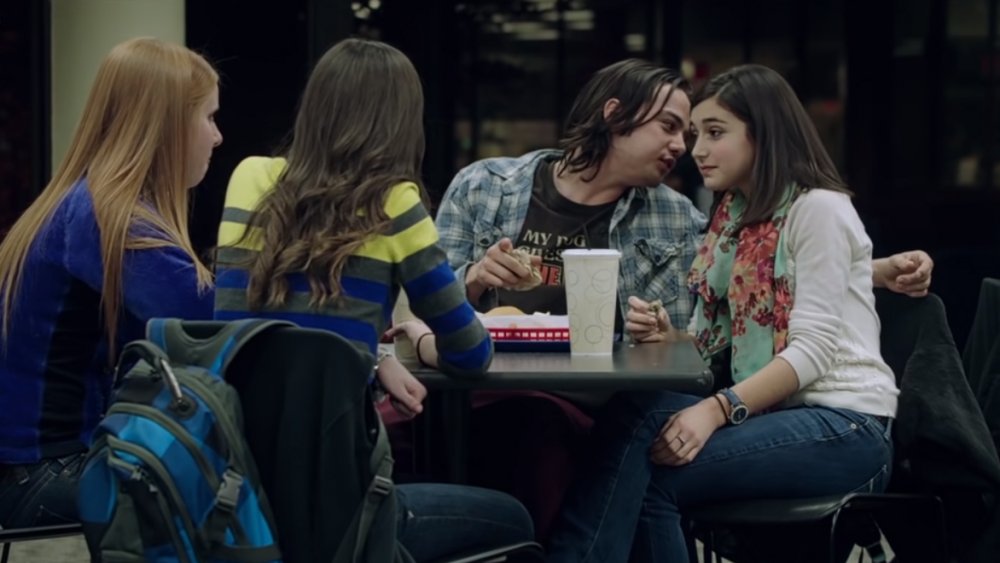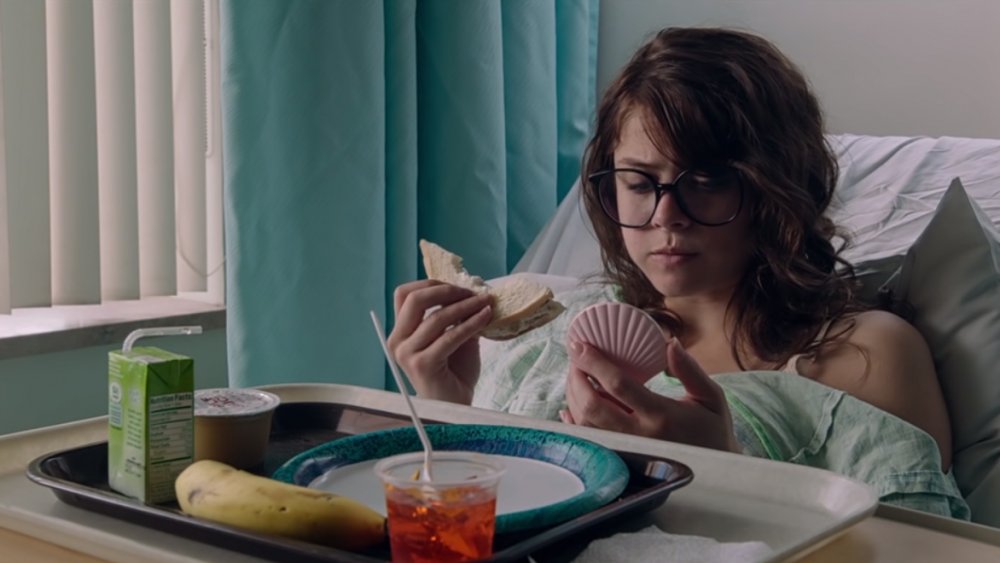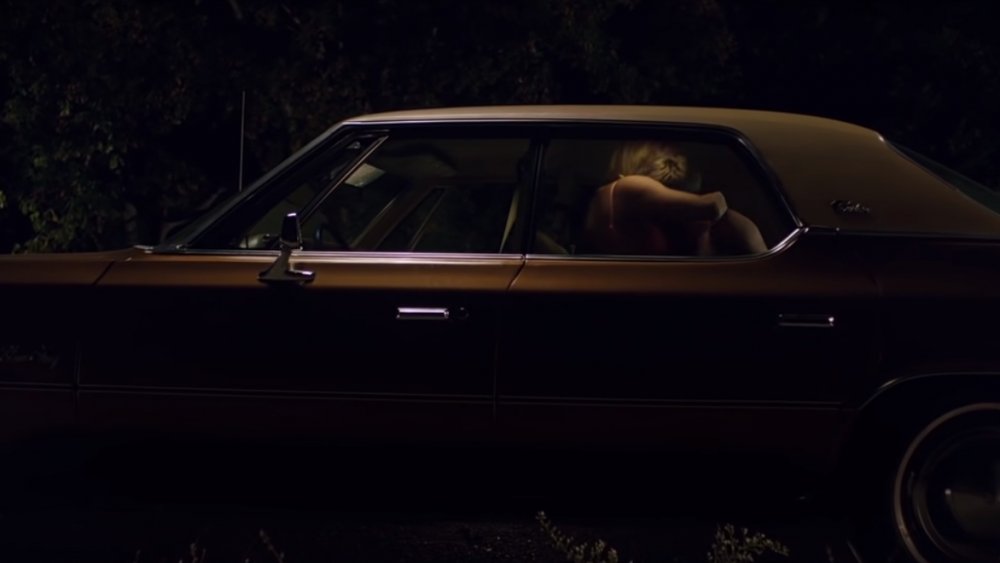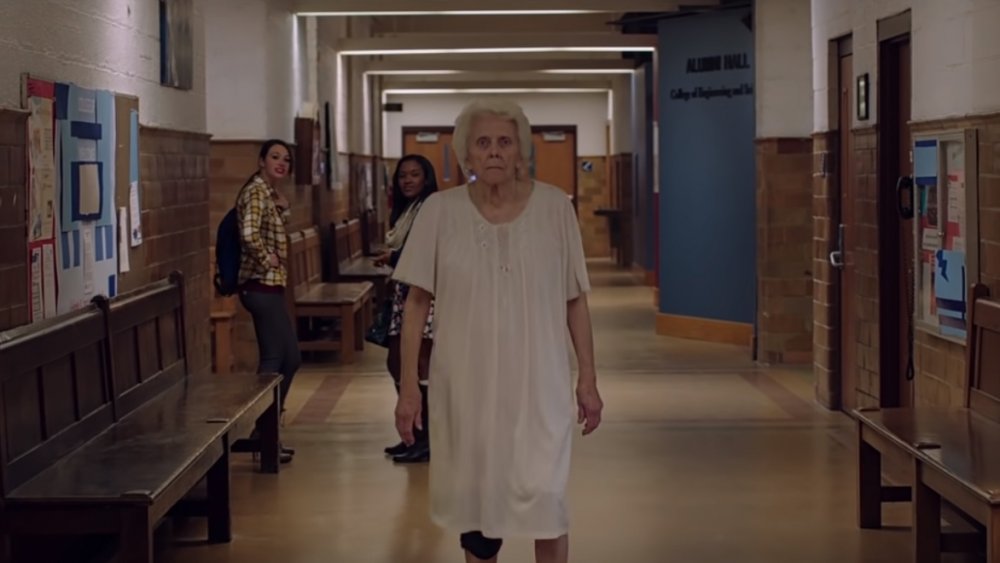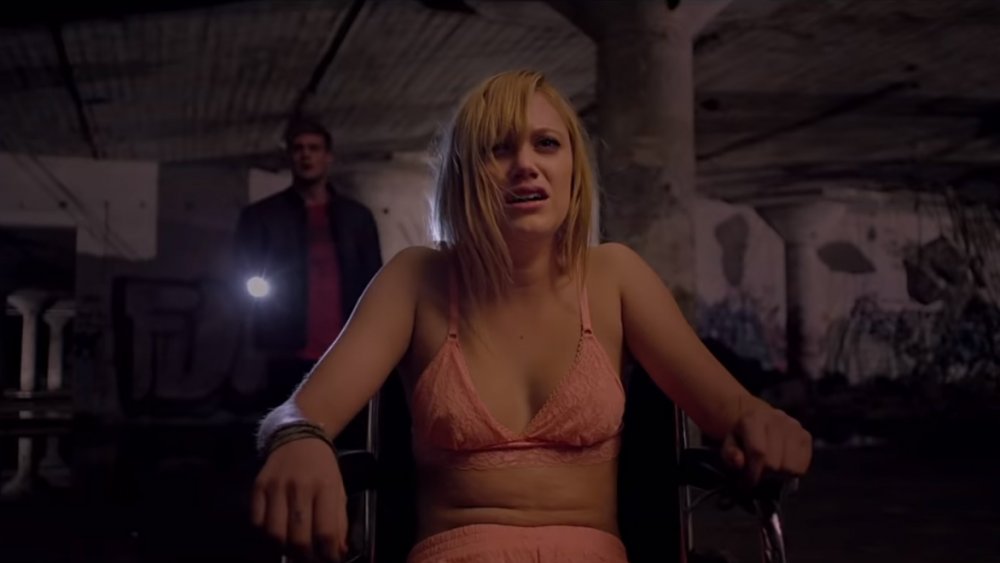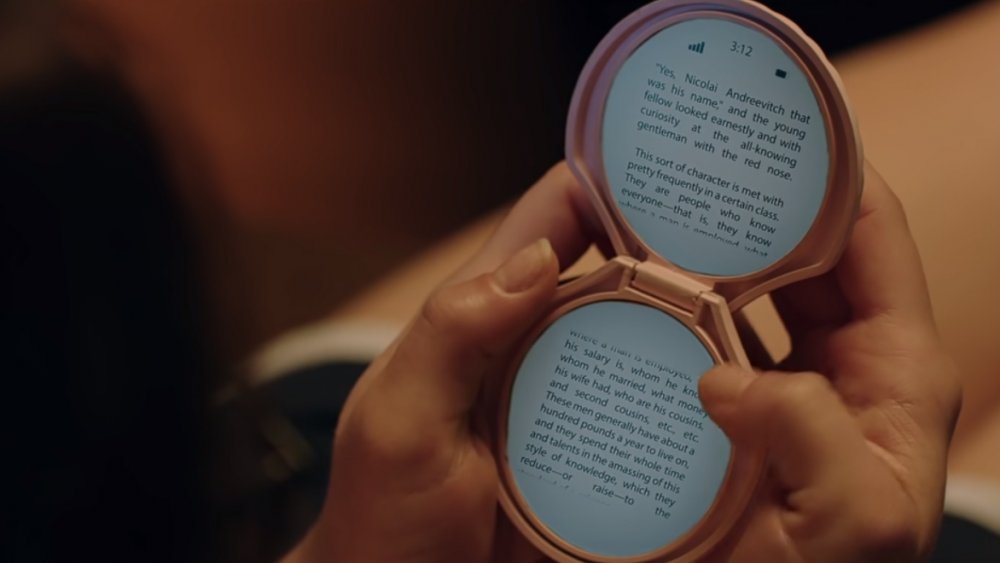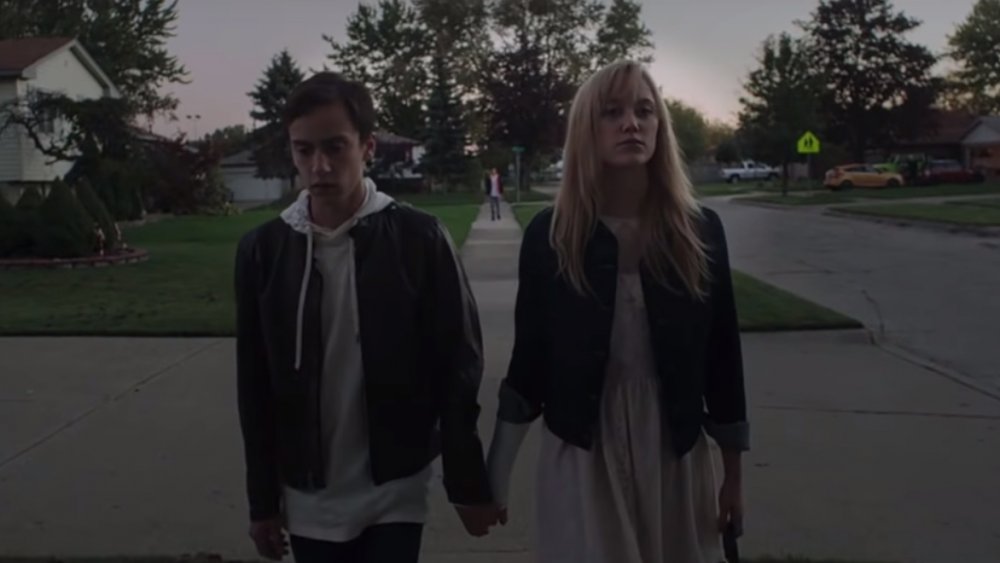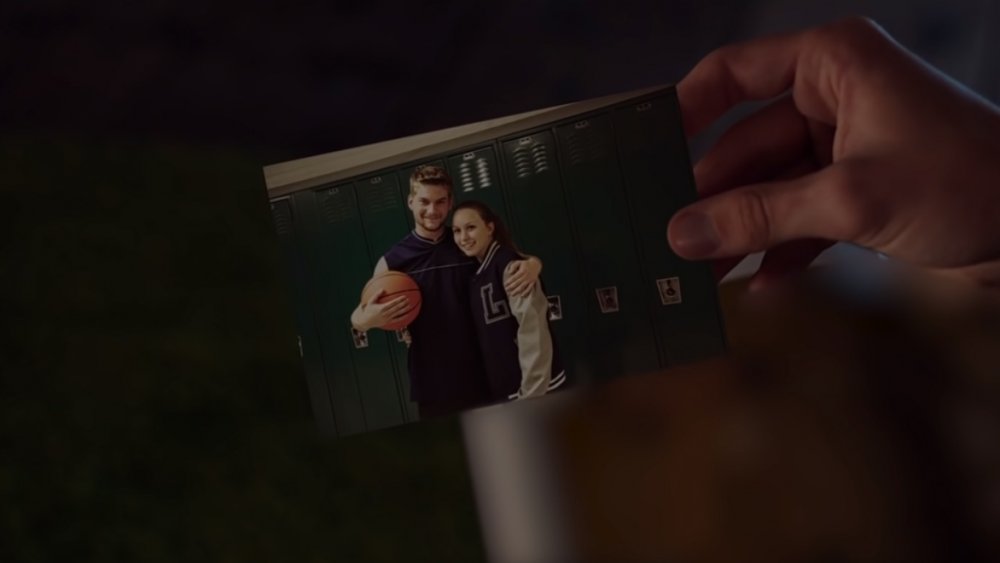The Ending Of It Follows Finally Explained
Some horror movies are easy to forget. Your pulse never changes during the initial viewing, and a week later, you barely remember the experience. Other horror movies make an impression. They rob you of your sleep. They make you glance back over your shoulder as you walk down the street. Some films are easy to leave behind, while others ... follow.
Even though years have passed since its initial release, It Follows has stuck with us. It tells the story of Jay (Maika Monroe), a college student who starts dating a kind yet mysterious boy named Hugh (Jake Weary). After Jay and Hugh have sex for the first time, Hugh abandons her, and Jay learns that he's given her a terrible curse. A "thing" is now following her. It can look like a stranger or someone she knows, only she can see it, and if it ever catches her, she will die. Despite not having any hard evidence of this creature's existence, Jay's friends decide to believe her story and band together to come up with a plan to kill this monster once and for all. It's then that we enter into the film's thrilling and terrifying climax.
Today, we're here to explore all the confusing moments and unanswered questions of this indie horror classic's intentionally ambiguous final act, in addition to analyzing some of It Follows' deeper themes. After years of waiting, this is the ending of It Follows, finally explained.
The showdown at the end
In order to kill the entity that's following Jay, her friends come up with a truly audacious plan. Jay, Kelly (Lilie Sepe), Paul (Keir Gilchrist), and Yara (Olivia Luccardi) break into an indoor public pool after hours. All around the pool, they plug in dozens of electric appliances — hair dryers, televisions, toaster ovens, and more. Then Jay swims into the middle of the pool and waits.
When "It" finally arrives, things don't go exactly as our heroes planned. Rather than walking into the pool so that Jay's friends can electrocute it, It starts picking up the various devices and hurling them at Jay. Some even start to collide with her, disorienting her and drawing blood. As Jay struggles to stay afloat, her friends intervene. Paul starts shooting at where he thinks the entity is, but he ends up hitting Yara in the leg. Then Kelly manages to throw a sheet over the creature, allowing Paul to shoot the monster in the head. It then falls into the water, but as Jay tries to swim out of the pool, the creature grabs her and holds her underwater. Firing blindly into the pool, Paul manages to shoot the creature again in the head, and this time, it stays dead.
The monster seemingly defeated, Jay and Paul go home and have sex. Then, in the final scene of the film, we see the two of them walking down the road together. In the distance, a figure slowly approaches from behind.
Why don't they just run away?
A common criticism of It Follows is that the monster isn't particularly threatening, relative to other horror movie baddies. "Why don't they drive to Mexico?" the whole internet asks, collectively. In a way, it's a fair question. The film never lays down definitive rules for how the creature works, so if you want to poke holes, it's defenseless.
But you could read things another way. Try giving the film the benefit of the doubt. Assume our heroes are smart. Assume Annie, the first victim (Bailey Spry), does drive far enough away, but it still kills her. Assume that Hugh is always tracking the monster's location, but it still almost gets him in the movie theater. Assume that Greg's cabin is a hundred miles away from Detroit, but it still finds them the very next day. Now that's scary.
In an interview with Yahoo Movies, director David Robert Mitchell clarified that Hugh's understanding of the monster's "rules" are just based on his experiences, and they're perhaps inaccurate. Hugh says it's always walking towards its next victim, but at one point, the monster is just standing still on Jay's roof. Maybe sometimes it disappears for months, and other times it shows up everywhere you go, appearing suddenly and without warning. We simply don't know what this thing can do and can't do, as the film is unconcerned with dumping exposition to inoculate itself against this form of "plot hole"-centric film criticism, opting instead to keep the monster unknowable and mysterious, for good and for ill.
Who is 'It' impersonating during the climax?
When the creature enters the pool room during the climax, Jay's sister, Kelly, asks her, "What do you see?" Jay responds, "I don't want to tell you." Based on her delivery, Jay seems deeply shaken by whatever she's looking at. Later, when we see things from Jay's perspective, the entity appears to be manifesting as a character we've never seen before: a middle-aged man with a beard. We know that the entity sometimes impersonates the loved ones of its victims, so who is It impersonating here?
The next time you watch the movie, whenever there's a scene in Jay's house, check out the pictures on her walls. Look at the Polaroids around her mirror. In a couple of the photographs, you'll see that same bearded man. It's never stated who he is, but it seems like a pretty safe assumption that this man is Jay and Kelly's father. And given that he isn't actually in the rest of the film, the odds are likely that he's either divorced from their mother or dead.
Perhaps their dad was an abusive jerk, and that's why it's so painful to see him again. Or perhaps he was a total saint who died tragically, so seeing his image being stolen by this horrible monster feels like a violation of their memories. Regardless, it's going to mess you up pretty bad when your dad starts throwing TVs and trying to drown you, so either way, Jay's reaction totally tracks.
Did Hugh, Greg, Paul, or Jay pass the curse along to anyone else?
It's never confirmed, but it's possible that Hugh, Jay, Paul, or Greg (Daniel Zovatto) passed the curse along to one or more unnamed side characters at some point to buy themselves a bit more time. But did they? Let's run down the evidence for each one.
Did Hugh give the curse to anyone before Jay? Almost certainly. Based on how confidently he knocked out Jay with chloroform, it didn't seem like his first time. It's likely that Annie, the girl killed at the beginning of the film, was a former lover of his that he sacrificed to the creature.
If Greg did, it was probably on accident. Shortly after he gets the curse, there's a scene when Greg is hanging out and flirting with a group of girls. Greg later remarks that he hasn't seen the creature yet, long after Jay expected it to appear. But perhaps it's because he inadvertently passed the curse along to someone else first.
The only evidence we have of Paul transmitting the curse comes in the closing minutes of the film, when he slowly drives past a pair of sex workers, showing that Paul is at least considering the possibility, whether or not he actually follows through.
There's also decent evidence that Jay herself passed the curse along. Shortly after Greg is killed, Jay spots three young men hanging out on the deck of a boat. Jay strips down and starts swimming towards the boat. We probably don't need to guess what she wanted from the guys on board.
What book is Yara reading at the end?
At the end of the film, as Yara is recovering in the hospital from her gunshot wound, she reads aloud to her friends a quote from a book, but she doesn't identify it at the time. The gist of the passage is basically, "And the most terrible agony may not be in the wound themselves but in knowing for certain that ... your soul will leave your body, and you will no longer be a person, and that this is certain. The worst thing is that it is certain."
So what's this quote from? Well, Yara mentions earlier in the film that she's reading The Idiot by Fyodor Dostoevsky, and this passage is indeed from that book. The Idiot is an extremely dense and complex text, and if we tried to explain everything going on in that novel, we'd be here all day, but if you're wondering whether or not it has any similarities to It Follows, the short answer is a resounding yes!
The protagonist, Prince Myshkin, is an extremely kind person trying to make his way in an unkind world. The title refers to the idea that people view Myshkin as "an idiot" because of his kindness, but the book argues that he's far wiser than the people around him. Similarly, It Follows is a film that extols the virtues of kindness. Unlike many horror film protagonists, Jay and her friends are also unusually empathetic and supportive of one another in an uncaring world.
Another idea explored throughout The Idiot is death, and how proximity to and awareness of death changes people. So Yara's quote clearly demonstrates how both these works have mortality on their mind. Both ask, "How do you spend your life when you know that death is inevitable?
What is It Follows actually about?
One common interpretation of It Follows is that it's primarily about sex. Since the monster passes from one person to another when they hook up, this interpretation states that the theme of the film is simply "sex is bad, and it will kill you."
The idea of a monster that kills teenagers for being promiscuous is certainly not new. It's been a core element of horror films like John Carpenter's Halloween and the Friday the 13th movies for so long that nowadays, this trope rarely appears unironically. It's more often presented with a knowing wink in the context of a satiric horror comedies like Scream or The Cabin in the Woods. So what's this old cliche doing here?
For what it's worth, whenever David Robert Mitchell is asked about an anti-sex interpretation of It Follows in interviews, he shoots this reading down pretty definitively, saying specifically that he didn't want to make a "puritanical" film. In his defense, there's clearly much more on this film's mind, thematically speaking, than just sex. If that's all a fan gets from this film, there's obviously quite a bit that they're missing.
Then again, it's tough to argue with the facts. When teens have sex, a monster kills them. The fact that so many viewers come away with the idea that this is clearly the message of the film means that, on some level, "sex is bad, and it will kill you" is one potential reading of the movie that we're forced to admit is a valid one.
It's about the inevitability of death
As Neil Gaiman once said, "If someone tells you what a story is about, they are probably right. If they tell you what that is all a story is about, they are very definitely wrong." With that in mind, let's talk about some other themes that It Follows has on its mind, beyond just sex.
One potential way to read the events of the film is that It Follows is about the inevitability of death. The entity is a slow moving, unstoppable monster that is always walking towards you, and if it catches you, you die. Or to think of it another way, when it catches you, you die. You can't kill it, you can't reason with it, and you can run for a little while, but you can't run from it forever. One day, death will catch you.
If the entity from It Follows starts chasing you, it's probably not going to catch you today. Death isn't scary because it will catch you today or tomorrow. It's scary because, no matter what you do, eventually, it will catch you. And death isn't a giant horrifying monster that's running at you and screaming at the top of its lungs. It's quiet and unassuming, out there somewhere in the world, slowly walking towards you. In a way, the It of It Follows ends up being the scariest monster in horror film history, because from a certain point of view, it's real, and one day, it really will get you.
The movie is about abuse
There's another way to read It Follows. It's tough to pick up on during your first viewing, but once you become aware of it, it adds a great degree of thematic depth to the film. It Follows is about abuse.
Apart from the literal monster that starts chasing her, what makes Jay's date with Hugh so horrifying isn't the sex, it's the abuse. Like a person hiding an STD from their romantic partner, Hugh lies to Jay about the potential repercussions of sleeping with him, and afterwards, he abandons her. Because of this trauma, Jay becomes "haunted" by the event, represented by a monster that now follows her.
What's one way that you can temporarily gain freedom from this monster? By passing it along and abusing someone else. This represents the idea that sometimes, people who are abused process their trauma in the most unhealthy way possible — by becoming abusers themselves. And how is the monster defeated, at least temporarily? Jay tells the truth to her friends, and they believe her, helping her fight a monster that they themselves literally can't see. By relying on her support structure, Jay's friends help carry the burden of her curse, unlike Hugh, who tries to go it alone and ends up passing his trauma along to someone else.
Perhaps it's no coincidence that, whatever appearance the entity adopts, they're always in some state of undress, and they're also often covered in bruises, looking very much like a victim of sexual abuse.
When does It Follows take place?
When you watch It Follows, you might have a hard time figuring out in what decade it's supposed to be set. Many signs point to it being a period piece. All the TVs are black and white, Hugh drives a 1975 Plymouth Gran Fury that seems brand new, and none of the kids seem to have cell phones. Then again, certain aspects of the film are undeniably modern. Annie drives a 2012 Nissan Versa, much of the fashion seems fairly modern, and Yara reads her Dostoyevsky on some sort of miniature computer or e-reader that looks like a seashell. So what's up?
The director has stated in various interviews that he intentionally mixed in a bunch of different bits of fashion and technology from different decades, to keep the film from becoming immediately dated and to give it a bit of a timeless and dreamlike feel. It was supposed to be somewhat subtle, a thing that you might not notice the first time you watch it, but apparently Yara's "shell phone" stood out quite a bit to viewers because they keep asking the director where they can get one. In an interview with Yahoo, Mitchell says, "People ask me where the shell phone is, or if they can get one, more than almost anything. We just made it up. ... It's funny, everybody keeps asking me if they can get one of those. And I'm convinced somebody is going to make them and get incredibly rich from doing it."
What is 'It,' and is it really dead?
Now for the biggest question of all, what is It? Is it a demon? A ghost? A malicious psychic projection born from the collective unconscious of humanity? Where did the entity come from, and is it gone forever? Sorry to break it to you, but there's definitively, purposefully no answer to these questions. In an interview with Digital Spy, Mitchell says, "I'm not personally that interested in where 'it' comes from. To me, it's dream logic in the sense that they're in a nightmare, and when you're in a nightmare, there's no solving the nightmare. Even if you try to solve it."
In terms of whether or not the creature is truly dead, the film doesn't say. Sure, it was shot in the head, but we don't know whether or not that's enough, and since the director isn't giving us answers, we have to figure this out ourselves by looking at the film's themes. What answer makes the most sense, given what the film is actually about and what the monster represents? If it's about death, then death will still get our heroes eventually. If it's about trauma, the trauma is still with them. So the answer that makes the most sense, thematically, is "yes." The monster is still with them, in one form or another, because even if the literal monster is no more, death is still coming for them, and until that happens, this experience will always follow them.
Will there be a sequel to It Follows?
Given that It Follows was both a critical and commercial success, should we be expecting an endless array of sequels and spinoffs, in the vein of A Nightmare on Elm Street? How long before we get It Follows 3: Pool Warriors?
When asked about sequel possibilities, David Robert Mitchell told Vulture (via Slate), "I couldn't say. ... But I do want to say that when I wrote this, I had some bigger set pieces, a few things that I sort of simplified, and some stuff that we chose to cut out because of the budget and time, so there's all kinds of fun things that could be done with this concept and story."
In terms of sequel concepts, Tom Quinn — co-president of one of the film's distributors — said he'd want to "flip the title" in a sequel. We imagine that would be a movie called Follow It, which would presumably tell the story of Jay working her way up the chain, trying to track down the originator of the curse. For what it's worth, the star actress is already on board. Maika Monroe told ComicBook.com in January 2021 that she "would do anything" to work with director David Robert Mitchell again. "Whether it's an 'It Follows' sequel or something else, I think he's so insanely talented."
It sounds cool on paper, but in terms of whether or not we'd actually like to see Follow It, to be honest, we're a little uncertain. Perhaps the coolest thing about It Follows is just how little lore there is and how the ending leaves you with so many ambiguities. Sure, we've just spent a long time explaining as much about this film as we could, but there are some questions that are better left unanswered.
